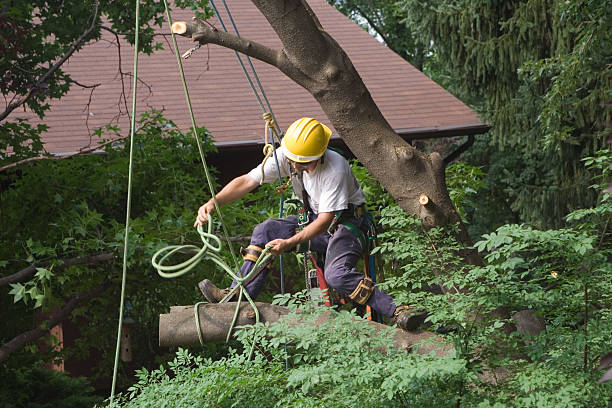

Trees add beauty, shade, and ecological balance to a property, but not all trees remain safe or beneficial over time. Some become hazardous due to age, disease, storm damage, or poor placement. When a tree starts showing warning signs, delaying its removal may seem like a way to save time or money, but this inaction often comes with greater risks. For property owners considering tree removal in Salem OR, understanding the potential dangers of postponing necessary action is essential to protecting people, property, and long-term landscape health.
Trees located too close to structures pose a significant risk if they are unstable, diseased, or dead. A single windstorm or heavy snowfall can cause weak limbs or the entire tree to fall, damaging roofs, windows, fences, or siding. Even large roots from declining trees can damage foundations and underground piping. Delaying tree removal can ultimately result in expensive repairs and potential insurance complications.
One of the most serious consequences of delaying tree removal is the danger it poses to people. Falling branches or trees can cause serious injury or even fatality. Children playing in the yard or visitors walking on your property could be struck without warning. Hiring a professional tree service to evaluate these risks helps prevent tragic accidents and maintains a safer environment for everyone on the property.
Diseased trees can quickly become sources of infection for nearby healthy trees. If left untreated or unremoved, fungi, bacteria, and pests can spread through root systems or by air. What begins as one unhealthy tree can escalate into a widespread issue affecting your entire landscape. Consulting an arborist early on allows you to assess the severity of the problem and determine whether immediate removal is the safest option.
A neglected, hazardous tree can negatively affect how your property is perceived. Overgrown or visibly dead trees reduce curb appeal and suggest poor maintenance, which can hurt your home's resale potential. In real estate, first impressions matter. When conducting a comparative property market analysis, buyers and agents often factor in the cost of tree removal or replacement, which can lower your asking price.
Keeping a dying or dangerous tree on your property can prevent new landscaping or building projects from moving forward. Whether you want to install a pool, redesign your garden, or expand your patio, removing problem trees is often the first step. Waiting too long to address tree removal can stall your improvement plans and cost you time during seasonal windows ideal for construction.
Dead or decaying trees are natural magnets for pests. Termites, carpenter ants, beetles, and even rodents often infest weakened wood, eventually moving closer to your home. In some cases, birds or larger animals will nest in hollowed trees, creating ongoing noise, waste, or safety issues. Removing these trees quickly helps deter unwanted infestations and keeps pests from migrating into your home.
When tree removal is put off, so is the process of dealing with the leftover stump. Tree stump removal is an important step in restoring your landscape and preventing further hazards. Stumps can trip people, damage lawn equipment, and become a breeding ground for mold or insects. Additionally, they detract from the aesthetics of your yard. Once the tree is removed, scheduling stump grinding should follow promptly to complete the process efficiently.
Delaying removal often leads to increased labor and service costs. A tree that could have been removed safely with a small crew may require cranes or additional personnel once it deteriorates further. As the condition worsens, the difficulty and danger of removal increase, and so do the costs. Contacting a trusted provider of tree service in Salem OR early in the process often results in safer, more affordable service.
If a tree falls and damages a neighbor's property, or injures someone, the legal and financial consequences can be substantial—especially if the tree was known to be hazardous. Insurance companies may not cover damages if it's proven that the problem was neglected. Being proactive with tree removal is not just a matter of maintenance; it's also a smart legal strategy to avoid future disputes.
Even if a tree is not dead or diseased, overgrowth and poor placement can cause issues. Trees that grow unchecked can block natural sunlight, stunt lawn or garden growth, and encroach on living spaces. Tree trimming may offer a temporary solution, but some cases warrant full removal. A professional arborist can help determine if trimming or complete removal is in your best interest, based on both current health and future growth patterns.
Delaying tree removal may seem harmless in the moment, but it often leads to greater problems ranging from property damage and safety risks to pest infestations and legal issues. When you suspect that a tree on your property is unhealthy, unstable, or poorly located, the best step is to consult a certified arborist for an expert opinion. Timely Professional tree removal in Salem OR can protect your home, preserve the health of your remaining landscape, and even boost your property value in a competitive market. Investing in prompt tree service, tree stump removal, or stump grinding helps ensure your outdoor space remains safe, attractive, and functional for years to come.